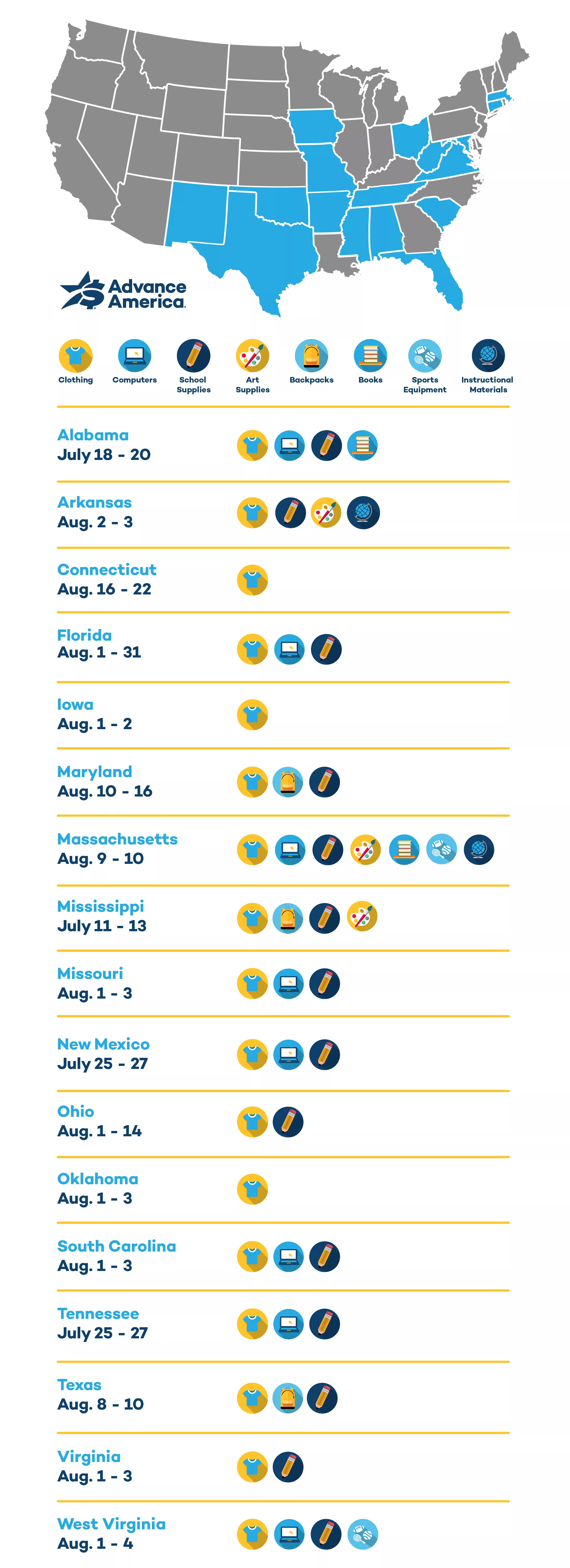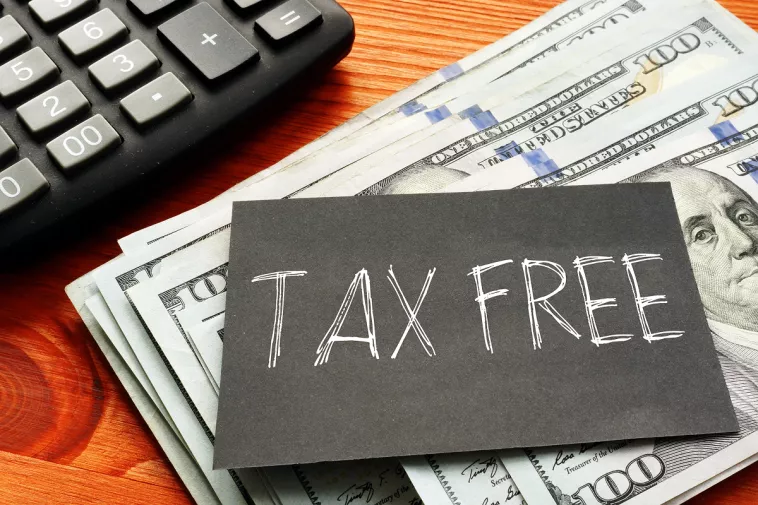

31 Ways to Get Free & Discounted School Supplies in 2025
Back-to-school season can sneak up fast . . . and those supply lists seem to get longer (and more expensive) every year. Between backpacks, pencils, notebooks, and lunch gear, the average family can easily spend hundreds before the first bell rings.
But here's the good news: You don’t have to pay full price to set your child up for success. From national retailers to local nonprofits — and plenty of smart savings tricks in between — there are more ways than ever to save on school supplies.
🎒 Shop smart at big-name retailers
Many retailers host buy one, get one free” (BOGO) sales in August and September. Find out when these sales are happening and use coupons to maximize your savings.
1. Walmart rollback prices
Walmart kicks off back-to-school season with major markdowns on essentials like notebooks, crayons, and glue sticks.
2. Target’s School List
Assist This free tool matches your child’s supply list to in-stock deals — and you can order it all in one click.
3. Staples’ back-to-school guarantee
Staples often runs twenty-five-cent deals and price matches competitors, helping you save on the spot.
4. Office Depot/OfficeMax promotions
Check their weekly ad for deep discounts on folders, markers, and backpacks.
5. Amazon’s back-to-school deals
Look for Lightning Deals and Subscribe & Save bundles on bulk items and lunchbox snacks.
6. Store loyalty programs
Join programs like Target Circle™ or Staples Easy Rewards for exclusive coupons and early access to sales.
Tip: Pair up with another parent, purchase two of every school item, and split the cost to make the most out of BOGO sales.
🏫 Tap into community resources
Local charities and businesses often host events to collect and distribute school supplies. If you’re unsure which organizations are helping families in your area, try contacting your local food bank, radio station, news channel, or school board for guidance.
7. United Way School Supply Drive
Contact your local United Way chapter or your child’s school for details on the distribution program. Most chapters work directly with the schools to hand out backpacks and other supplies.
8. Salvation Army giveaways
Many locations offer school supply kits for eligible families. Call your local branch for details.
9. City and county back-to-school fairs
Hosted by school districts or local governments, these events may include free supplies, haircuts, and even immunizations.
10. Public libraries and rec centers
You might find end-of-summer events offering school gear and books.
11. Ask your child’s school
Schools often collect supply donations or invite sponsors to shop for families in need.
12. Faith-based organizations
Churches, mosques, and community groups often host their own giveaway events.
Some Advance America stores host backpack drives to give away free backpacks filled with school essentials. Contact your nearest location to see if they’re hosting one this year.
💻 Go digital for big discounts
You don’t have to clip paper coupons to score great deals. There are plenty of ways to save just by shopping online.
13. Cashback apps like Rakuten or Ibotta
Get cash back on supplies you’re already buying — even if you shop online.
14. Coupon browser extensions
Free extensions like Honey and Capital One Shopping search for coupon codes and apply them automatically at checkout.
15. Coupon websites
Try RetailMeNot or Coupons.com for printable or digital discounts on name brands.
16. Brand email lists
Sign up for updates from companies like Crayola or Elmer’s to score coupons and freebies.
17. Store apps = secret deals
Download retailer apps (Target, Walgreens, Dollar General) for exclusive, app-only savings.
➢RELATED: How to Save More Money in 2025
Don’t forget social media! Follow brands and stores on your favorite platforms. Sometimes they post exclusive, time-limited discounts.
🛒 Stretch your budget at every turn
You don’t have to rely on big-box or office supply stores for school shopping.
18. Thrift and consignment stores
Gently used backpacks, lunch bags, and even clothes for a fraction of the cost.
19. Dollar stores for the win
Dollar General, Family Dollar, Dollar Tree, and Five Below are all great for stocking up on basics like folders, erasers, sticky notes, and art supplies.
20. Bulk-buy with other parents
Split big packs of pens or notebooks with another family to reduce your per-item cost.
21. Reuse what you already have
Check last year’s backpack and pencil case before buying new.
22. Clearance shopping all year
Snag school supplies on sale in the off-season, especially after holidays or during spring resets.
23. Consider store-brand supplies
Store brands like Pen+Gear (Walmart) or Up&Up (Target) often offer the same quality at lower prices.
➢RELATED: 5 Steps to Create a Budget
Skip the pricey hobby stores — dollar stores are a goldmine of affordable art supplies for school projects!
🤝 Think outside the big box
If you know a small business owner, ask if they have extra office supplies to share. Online marketplaces are also great places to discover free or low-cost office and art supplies — just be sure to choose a public meeting spot (like a police or fire station) when buying from internet strangers.
24. ‘Buy Nothing’ groups
Search for local groups on Facebook or your local Nextdoor community, as people often give away extras.
25. Host a school supply swap
Invite friends and neighbors to meet up and trade. This is a good way to get rid of supplies you don’t need and score items you do.
26. Check community freecycle pages
Browse Craigslist’s “free” section or local online boards.
27. Try a ‘Library of Things’
Some towns lend out calculators, tech devices, or art supplies through public libraries.
Share your school supply list with friends and family — they may have extra items or gently used clothes their kids have outgrown.
🗓️ Time your purchases
When you shop can be just as crucial as where.
Ready for tax-free shopping?
School supplies? Dorm décor? A fresh pair of kicks?
Tell us: What are you planning to grab tax-free this year?
28. Stock up during tax-free holidays
Many states waive sales tax on school supplies in July or August. See if your state is participating this year and plan your big shopping trip accordingly.

29. Watch for educator sales
Retailers like Michaels and Staples offer teacher discounts that sometimes extend to homeschool families or parents.
30. End-of-season clearance
If you can wait a week or two after school starts, leftovers often go on deep discount.
31. Manufacturer rebates
Brands like Avery or Sharpie occasionally run back-to-school rebate promotions. Just be sure to keep those receipts!
Don’t miss out on big savings! Mark your state’s tax-free shopping weekend on your calendar and set reminders.
💡Small savings = big wins
The best way to save on school supplies is to start early, stay flexible, and mix and match your resources. Whether you're using a coupon app, swapping with neighbors, or showing up to a community fair, every little bit helps.
And remember — you don’t have to do it alone. We’ve got your back.
Notice: Information provided in this article is for informational purposes only. Consult your attorney or financial advisor about your financial circumstances.



